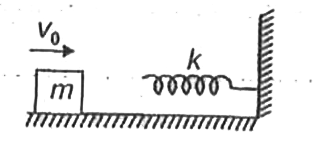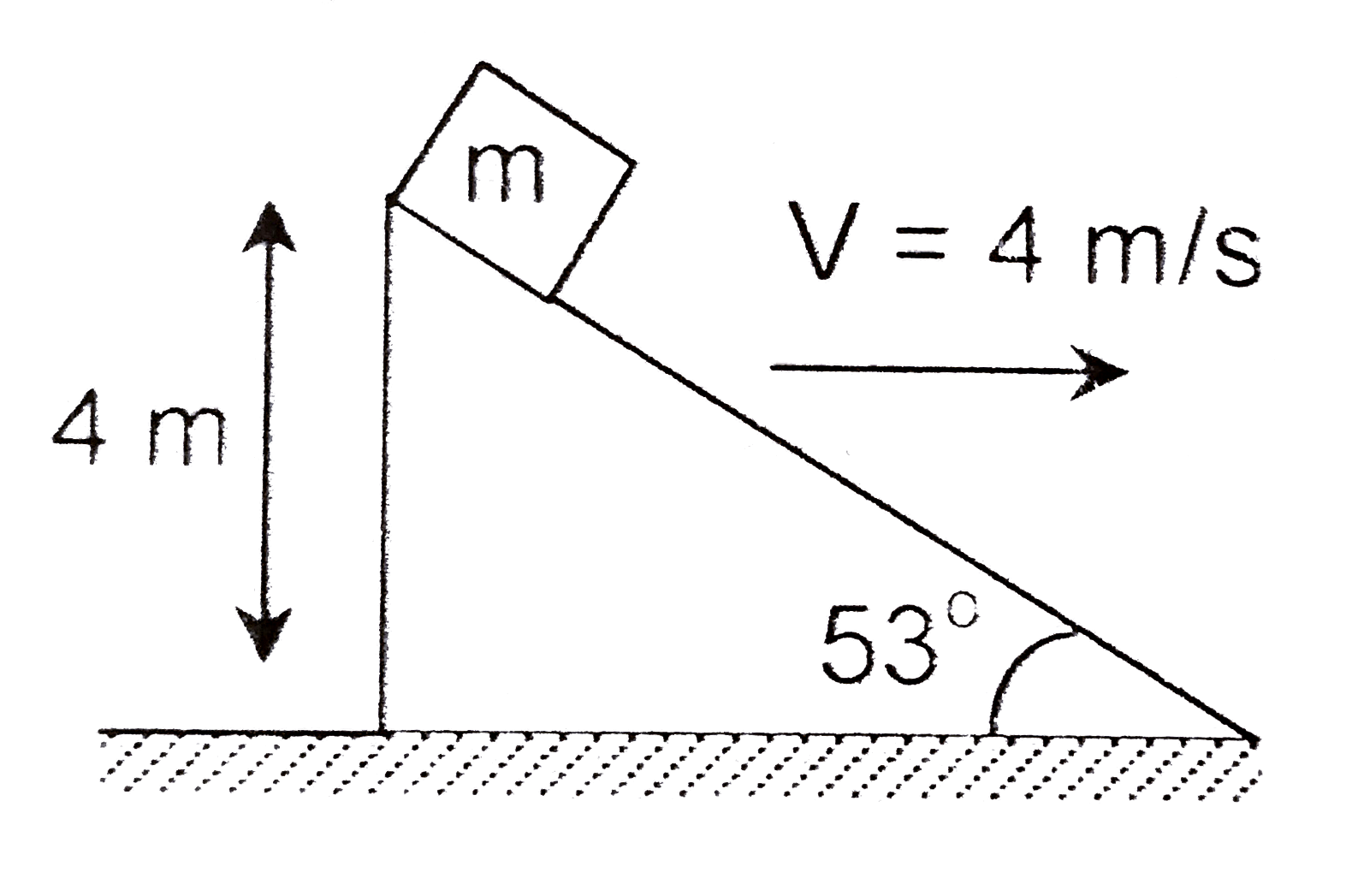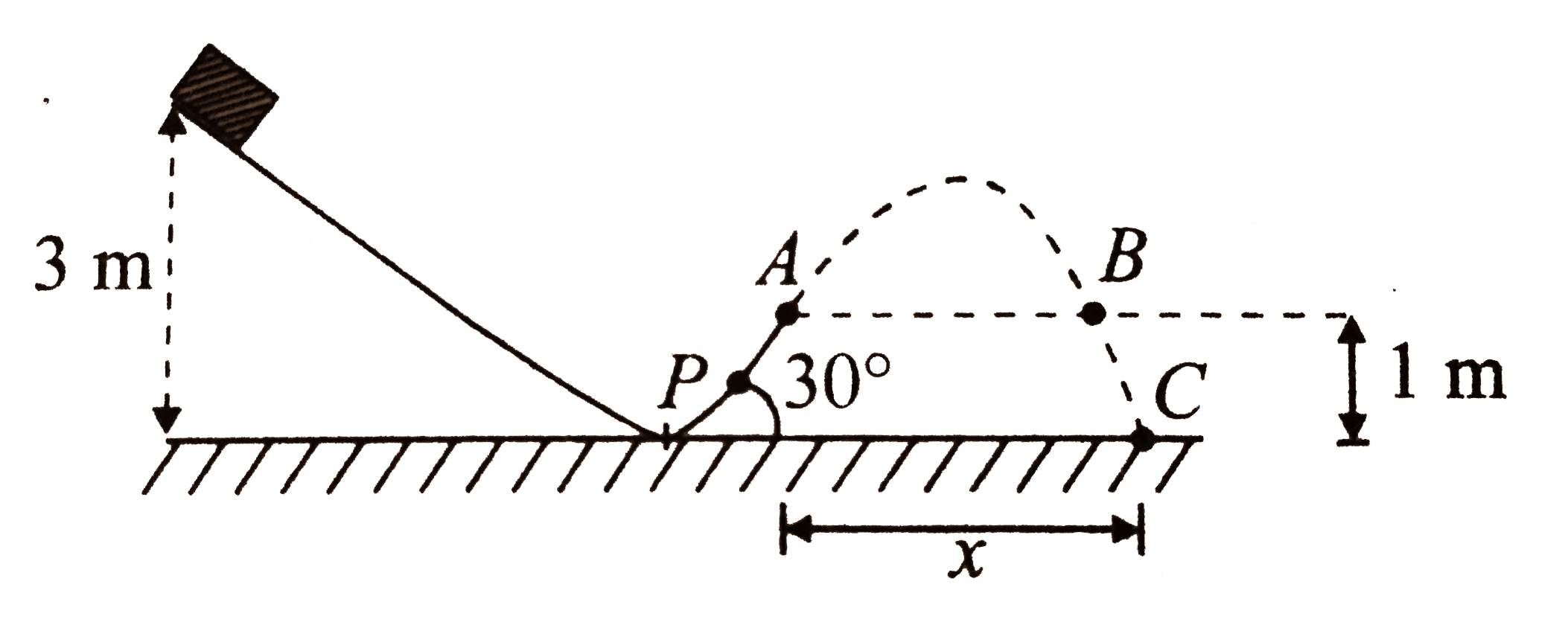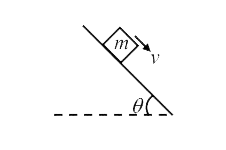An ice block is melting at a constant rate ∣∣∣dmdt∣∣∣=μ. Its initial mass is m0 and it is moving with velocity on a frictionless horizontal surface. The distance travelled by it till it melts completely is :
2m0υμ
m0υμ
m0υ2μ
can't be said
The correct Answer is:B
Step by step video, text & image solution for An ice block is melting at a constant rate |(dm)/(dt)|=mu. Its initial mass is m_(0) and it is moving with velocity on a frictionless horizontal surface. The distance travelled by it till it melts completely is : by Physics experts to help you in doubts & scoring excellent marks in Class 11 exams.
Updated on:21/07/2023Topper's Solved these Questions
- IMPULSE AND MOMENTUMBOOK - ANURAG MISHRACHAPTER - IMPULSE AND MOMENTUMEXERCISE - L-2
21 Videos
- IMPULSE AND MOMENTUMBOOK - ANURAG MISHRACHAPTER - IMPULSE AND MOMENTUMEXERCISE - L-3,(P-1)
5 Videos
- IMPULSE AND MOMENTUMBOOK - ANURAG MISHRACHAPTER - IMPULSE AND MOMENTUMEXERCISE - Example
50 Videos
- FORCE ANALYSISBOOK - ANURAG MISHRACHAPTER - FORCE ANALYSISEXERCISE - Matching type
13 Videos
- RIGID BODY MOTIONBOOK - ANURAG MISHRACHAPTER - RIGID BODY MOTIONEXERCISE - MATCH THE COLUMN
12 Videos
Similar Questions
Knowledge Check
A block of mass m moving with velocity v0 on a smooth horizontal surface hits the spring of constant k as shown. Two maximum compression in spring is
 A√2mkv0B√mk.v0C√mk.v0Dm2k.v0
A√2mkv0B√mk.v0C√mk.v0Dm2k.v0A block of mass m is gently placed over a massive plank moving horizontal over a smooth surface with velocity 10ms−1. The coefficient of friction between the block and the plank is 0.2. The distance travelled by the block till it slides on the plank is [g=10ms−2]
A10 mB15mC25 mD35mAn inclined plane is moving with Constant velocity v=4m/s on a horizoontal surface as shown in figure. If a block of mass 2kg is kept at top of the incline and their is no friction between the block and the incline, then the distance travelled by the incline till the block reaches bottom of the inclined is (g=10m/s2)
 A4mB5mC1.6√5mD2√5m
A4mB5mC1.6√5mD2√5m
Two blocks of masses m1=1kg and m2 = 2kg are connected by a spring of spring constant k = 24 N/m and placed on a frictionless horizontal surface. The block m1 is imparted an initial velocity v0 = 12cm/s to the right. The amplitude of osciallation is
View SolutionA uniform cube of mass m and edge a moves on a horizontal surface along the positive x-axis, with initial velocity v0. Then
View SolutionA block of mass m starts at rest at height on a frictionless inclined plane. The block slides down the plane, travels across a rough horizontal surface with coefficient of kinetic friction μ and compresses a spring with force constant k a distance x before momentarilly coming to rest. Then the spring extends and the block travels back across the rough surface, sliding up the plane. The block travels a total distance d on rough horizontal surface. The correct experssion for the maximum height h' that the block reaches on its return is :

View SolutionIn the figure shown a cart moves on a smooth horizontal surface due to an external constant force of magnitude F. The initial mass of the cart is M0 and velocity is zero. Sand falls on to the cart with negligible velocity at constant rate μkg/s and sticks to the cart. The velocity of the cart at time t is :

View SolutionA 0.098−kg block slides down a frictionless track as shown in (Fig. 5.208).
 .
.
The horizontal distance x travelled by the block in moving from A to C is.
View Solution

